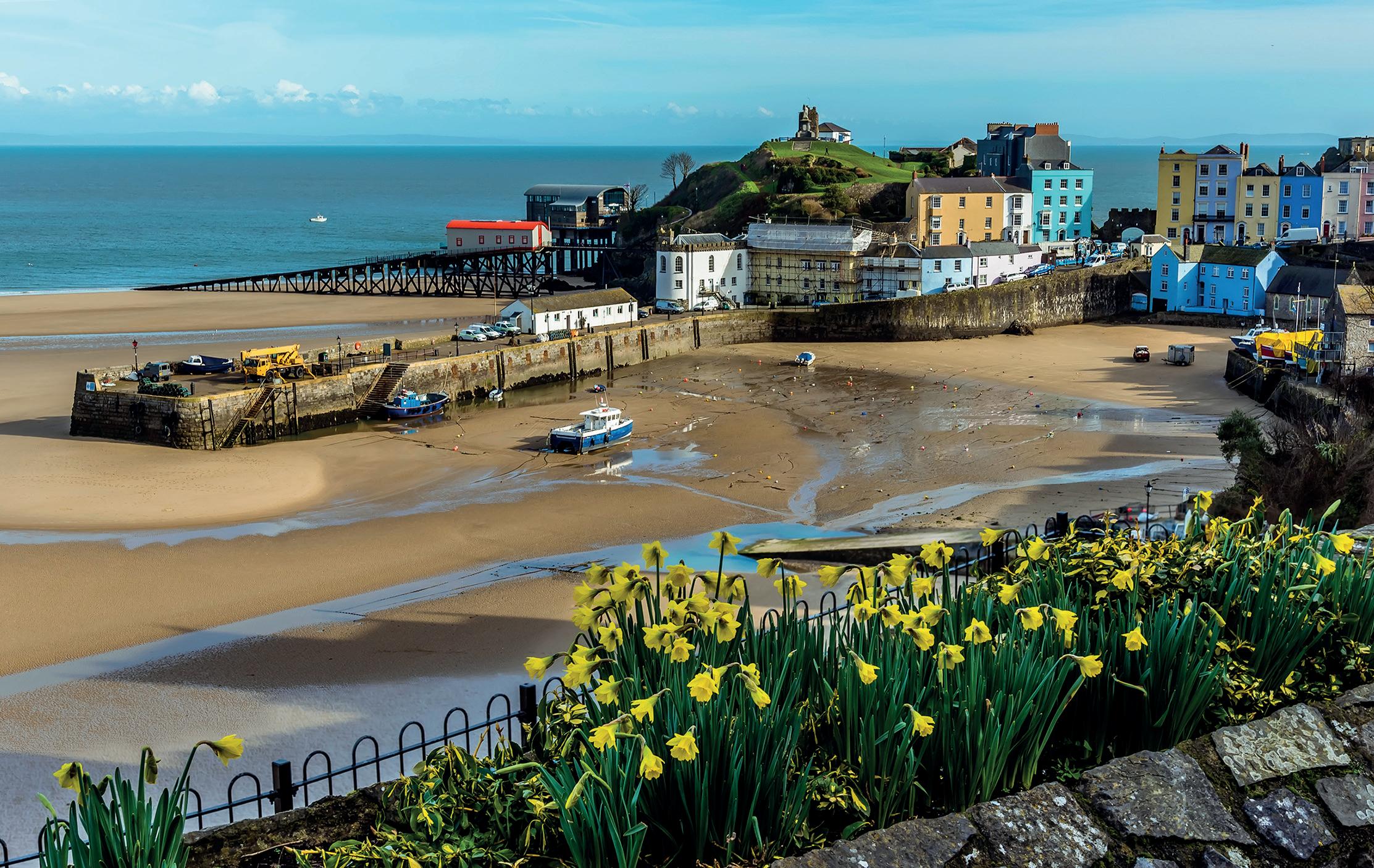CROESO I GYMRU: BOOSTING THE ECONOMIC IMPACT OF TOURISM IN WALES



FSB Wales: Croeso i Gymru: Boosting the economic impact of tourism in Wales
FOREWORD
The Welsh Government’s ambitious new plan for the Welsh economy, outlined in “Prosperity for All: Economic Action Plan”, rightfully identifies tourism as a key sector in the Welsh economy. Making a valuable contribution to jobs and growth in communities across Wales. The Economic Action Plan outlines a new approach to business support, and a changing focus in Welsh Government action.
FSB Wales has sought to better understand tourism businesses within our membership, and the support they receive from Government. We support the Welsh Government’s new approach, and wish to provide evidence to inform their decision making and future options for business support.
Our work was further prompted by the floating of a “tourism tax” by the Cabinet Secretary for Finance and Local Government at the end of 2017. This piece of work has tried to understand initial reactions to this proposal, and offers some thoughts on its practicality for Wales.
FSB has carried out a survey of members, and desk based research in order to better understand our member’s needs and desires in tourism. This report lays out the results of this exercise and makes recommendations to Welsh Government on that basis.
INTRODUCTION
Tourists spend around £14 million a day whilst in Wales, amounting to around £5.1 billion a year1, with tourism having particular importance to some regional geographies of Wales, particularly in the National Parks and Wales AONBs.
Tourists spend around £14 million a day whilst in Wales, amounting to around £5.1 billion a year
Like all sectors of the economy, tourism is dominated by a large number of very small firms, with a much smaller number of larger firms providing notable employment and acting as key destinations for visitors. Tourism in Wales is also spatially concentrated, in particular around the National Parks and Areas of Outstanding Natural Beauty, but also with a large number of visitors to Cardiff.
A large proportion of tourism in Wales comprises day visits from visitors living elsewhere in the UK, there are approximately 10 million trips to Wales by residents from elsewhere in Great Britain2. A key challenge for the Welsh Government and Visit Wales is to increase the length of these stays, and the spend that occurs within them.
10 million trips to Wales annually by residents from elsewhere in Great Britain
970,000 people visit Wales from elsewhere in the world
A further 970,000 people visit Wales from elsewhere in the world, the majority from European destinations (the Republic of Ireland, France and Germany). Post-Brexit we must ensure that Wales, and the Welsh Government have a strong presence in these markets to advertise Wales – this can, and should be a key function of our overseas offices and Wales should feature distinctly in UK Campaigns. FSB Wales has also long campaigned for the devolution of Air Passenger Duty to Wales which would afford Welsh Government flexibility to attract new airlines, carriers and routes.3
Tourism is also now named as a “foundational sector” in the Welsh Government’s new Economic Action Plan4, and this calls for some careful thinking about how the sector can fit in to a new approach that seeks to make the Welsh economy deliver on a wide set of objectives than traditional “jobs and growth”.
Tourism is now named as a “foundational sector” in the Welsh Government’s new Economic Action Plan
In order to inform this paper, we carried out a survey of our members in tourism and related sectors. The survey has been supplemented with qualitative feedback which we have used to build a picture of the state of play amongst tourism SMEs in Wales.
3 FSB (2017) Welcome movement in the Budget but unresolved issues remain for Wales
4 Welsh Government (2017) Economic Action Plan
BACKGROUND
The statutory tourism functions of the Welsh Government fall under two primary Tourism Acts. The Development of Tourism Act 1969 and the Tourism (Overseas Promotion (Wales)) Act 1992.
The Development of Tourism Act 1969 gives the Welsh Government general powers and functions to:
• encourage people to visit Wales and people living in Wales to holiday here
• encourage the provision of tourism amenities and facilities in Wales.
In order to carry out these functions, Welsh Government funds Visit Wales, which looks after:
• tourism policy
• encouraging investment
• improving the quality of the visitor experience in Wales.
Visit Wales is also responsible for marketing Wales within the UK and internationally.
The tourism strategy for Wales ‘Partnership for Growth’ 5,6 has the following vision for tourism:
“Wales will provide the warmest of welcomes, outstanding quality, excellent value for money and memorable, authentic experiences to every visitor.”
A review of performance against the strategy 7 suggests that progress has been made against Welsh Government’s key priorities in this area since 2013. Welsh share of the UK tourism market has improved, and there has been growth in the sector across Wales. Welsh Government are confident of reaching their 2020 targets.
However, there are challenges facing the sector, particularly for smaller operators who may be falling by the way side in a focus on major attractions and large events. More widespread problems of workforce development and length of season also remain challenges.
LENGTH OF SEASON
In response to our survey of members, we have established the following patterns:
Of those that do state a “season”, the majority report a season that begins in March or April and ends in October or November. That is, the vast majority of their business occurs within a six month window during the summer.
Interestingly, the proportion of respondents’ workforce employed seasonally is smaller than one might suppose from the seasonality of work.
Respondents are clearly aiming to balance their workload across the year in order to retain talent and support their workforce.
In response to the survey, we received a number of comments on seasonality, some of which are illustrated below:
“It is a total nightmare to get seasonal staff so we have to offer all year round which means we are making up hours in the winter.”
“we have employed a chef and later a cook, but we cannot now sustain such a person all year round.”
There is a clear imperative for the Welsh Government/Visit Wales to investigate innovative ways to lengthen the season in order that SMEs are able to provide reliable employment throughout the year.
There is a sense that some SMEs are struggling to attract quality, skilled staff due to issues around seasonality, and this was also highlighted in some responses to questions around apprenticeships. In response to this question, some SMEs suggested they may not be able to offer enough work “year round” to support an apprenticeship scheme.
Given tourism is of particular importance in more rural areas of Wales, Welsh Government should carefully consider how its new focus on quality of work, outlined in the Economic Action Plan 8 (and the Wellbeing Indicators 9) might apply in this sector. This may be through the funding of local events, supporting the creation/development of all-weather attractions, or supporting diversification of tourism businesses in similar ways to that which has relatively successfully been done with agriculture and farming. 8 Welsh Government (2017) Economic Action Plan 9 Welsh Government (2016) How to Measure a Nation’s progress? National Indicators for Wales
ACCESS TO FUNDING
We questioned our members on whether they had received public funding.
These figures are relatively disappointing, and lead one to query where Welsh Government tourism funding is being spent, and whether the funding is making its way to SMEs or being absorbed by larger firms.
Once the funds are examined it becomes clear why there may be a lack of uptake amongst SMEs in Wales. As far as we are aware, there are five main pots of public support for tourism business in Wales, these are:
TOURISM INVESTMENT SUPPORT SCHEME10
TOURISM AMENITY INVESTMENT SUPPORT12
TOURISM PRODUCT INNOVATION FUND13
This scheme can invest over a period of up to 30 years, in projects from £5,000 to £500,000 in value. The scheme will support up to £25% of project cost.
Investment in the scheme is on a basis of £5,000-£10,000 per Full Time Equivalent Post Created.
Approximately 30% of funds are repayable over a period of 15-25 years. This is intended to be the main source of support for tourism businesses. In 2014/15, £13.9 milllion was invested to support 311 jobs11
Guidance notes are available here: https://businesswales.gov.wales/sites/ business-wales/files/tourism/160608tiss-guidance-note-en.pdf
The Amenity support scheme will provide up to 80% support, with a maximum grant size of £128,000.
It is focused on infrastructure schemes, and is generally used to support a suite of investment in public spaces in specific locations.
Grants of £20,000 - £150,000 with up to 100% support available. Applications must be collaborative and are revenue support and cannot be used to fund capital projects
Guidance notes on eligibility are available here: https://businesswales.gov. wales/sites/business-wales/files/tourism/RDP_TPIF_2018-2019_Guidance_ Note_EN_2017-10-25.pdf
REGIONAL TOURISM ENGAGEMENT FUND14
MICRO SMALL BUSINESS FUND15
To promote and develop distinctive, high quality visitor destinations through the delivery of their destination management plans.
This fund can provide support of between £25,000 and £500,000, with up to 40% of project cost being invested.
Support is based on a notional figure of £10,000 per FTE job created. Guidance notes are available here: https://businesswales.gov.wales/tourism/ sites/tourism/files/documents/MSBF%20-%20Guidance%20Document%20 E%20130617.pdf
In looking at the eligibility criteria for these funds, and the degree of uptake in our membership, it becomes clear that the these funds are simply out of reach for most small members and the majority of businesses active in tourism in Wales.
Even the Micro Small Business Fund, notionally targeted at the smallest businesses, could require most of the smallest businesses to be nearly doubling in size in order to gain funding – this may not be a realistic assumption, especially if there are issues of seasonality. For example, the Micro Small Business Fund has a minimum funding threshold of £25,000 and is targeted to support 1 FTE per £10,000 invested. The vast majority of SMEs, employ fewer than 5 people.
It is likely that the majority of these funds are therefore taken up by already relatively successful, and larger firms. Evidence obtained by the FSB suggests that this is almost certainly the case with respect to both the Micro Small Business Fund, and the Tourism Investment Support Scheme16 Whilst there is some value in targeting support at larger firms, and in particular attractions that may be able to lengthen the season in a locale, it is clear that the vast majority of Wales’ tourism businesses will be slipping through the net with respect to these funds, and that worthwhile innovation in smaller scale businesses is not being supported.
There should be a clear alignment of these funds with the strategic priorities of Welsh Government and Visit Wales. We also feel the alignment of these funds to relatively high notional job creation figures could be unhelpful in supporting uptake. Funds should aim to support sustainable growth, or the sustainable management of tourism businesses and not to focus on rapid growth.
10 https://businesswales.gov.wales/zones/tourism/tiss
11 Welsh Government (2015) Written Statement by the Deputy Minister for Culture, Tourism and Sport on Tourism
12 Welsh Government, Tourism Amenity Investment Support Fund
13 Welsh Government, Tourism Product Innovation Fund
14 Welsh Government, Regional Tourism Engagement Fund
15 Welsh Government, Micro Small Business Fund
16 See this reporting in the Daily Post available here https://www.dailypost.co.uk/business/business-news/ north-wales-tourism-grant-cash-13531002 and information obtained by FOI requests placed by FSB
ROLE OF LOCAL OFFICERS AND FACILITIES
In order to establish who our respondents’ key contacts within Government were we asked who they had contact with.
Do you have contact with o cers in any of the following organisations?
There are two key findings here, first that over 30% of business have no contact with the main arms of government in Wales. This presents challenges in reaching out to the sector, engaging and communicating with it as shown by the generally negative response of the sector with regard to the suggestion of a tourism tax.
Secondly, the majority of respondents’ main contact was with a local authority officer, suggesting that utilising these networks may be the most effective way to provide support to tourism businesses. Similarly, as the Welsh Government develops a more focussed regional footprint for its Action Plan, consideration should be given to boosting resource and the number of these frontline points of contact.
In comments, there are also suggestions that contacts within Local Authorities and National Parks play a key role in signposting businesses to available funding. This may also help explain why larger firms (which are more prominent locally) are more likely to access funding.
There are also questions arising here around the potential impacts of the winding down of Local Authority activities due to public sector austerity. For example, the closure of tourism information centres may have a disproportionate impact on smaller businesses who have less capacity to undertake their own marketing activity17
This also emerges when we ask respondents about Non-Domestic Rates and Tourism Tax, as there is a palpable sense that business are paying in and receiving very little in return.
Moving forward, Welsh Government and other agencies should seek to better understand the role that local networks and key local actors have in the facilitation of funding, and other public goods in this sector. Welsh Government should consider whether Local Authorities should take on some of the delivery of its tourism offer.
